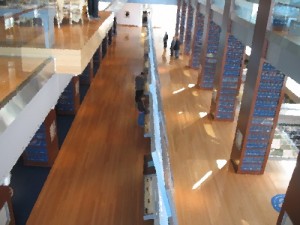The Guardian newspaper interviewed authors for their rules for writing fiction. The lists are quite interesting, and we try to instill many of the rules in our language curriculum:
Read it aloud to yourself because that’s the only way to be sure the rhythms of the sentences are OK (prose rhythms are too complex and subtle to be thought out – they can be got right only by ear). – Diana Athill
Keep a diary. The biggest regret of my writing life is that I have never kept a journal or a diary. – Geoff Dyer
Do it every day. Make a habit of putting your observations into words and gradually this will become instinct. This is the most important rule of all … – Geoff Dyer
Cut (perhaps that should be CUT): only by having no inessential words can every essential word be made to count. – Diana Athill
Some are a little odd:
Take a pencil to write with on aeroplanes. Pens leak. But if the pencil breaks, you can’t sharpen it on the plane, because you can’t take knives with you. Therefore: take two pencils. Margaret Atwood
And many make you think:
Finish the day’s writing when you still want to continue. – Helen Dunmore
Have regrets. They are fuel. On the page they flare into desire. – Geoff Dyer
Only bad writers think that their work is really good. – Anne Enright
I still have not gotten through the whole list, but Graeme Wood summarizes, “the rules sound haughty and dismissive, which is about what you should expect when you ask skilled craftsmen to reduce their craft to a few simple rules.” Yet to me, looking at a few of them at a time makes for a nice space for reflection on my own writing. It’s also the sort of semi-random trivia that my students seem to like. I know they’ll take issue with some of these rules, but that in itself would be make it useful.
For this reason, I like Jeffrey Tayler’s advice (which is not on the list):
[R]emember: None of us gets out of here alive. So don’t fear risks. Rebel. Be bold, try hard, and embrace adversity; let both success and failure provide you with unique material for your writing, let them give you a life different enough to be worth writing about.



